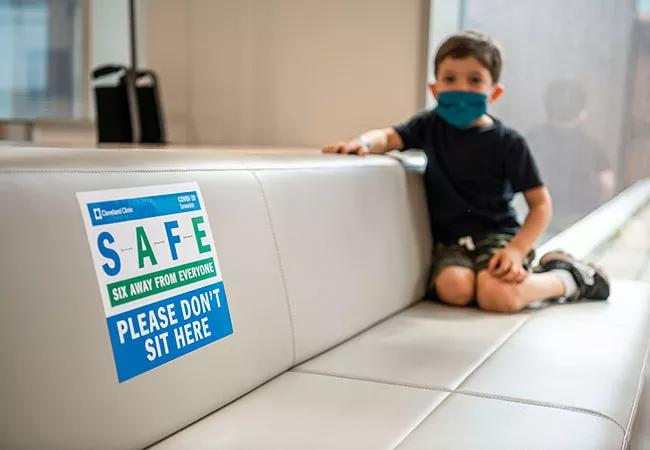Aerosolization increases exposure risk for endoscopists

As the medical community begins to understand the rapidly evolving COVID-19 pandemic, there still isn’t much information about its impact on children.
Advertisement
Cleveland Clinic is a non-profit academic medical center. Advertising on our site helps support our mission. We do not endorse non-Cleveland Clinic products or services. Policy
“We’ve certainly learned a lot about COVID-19 in the last six months, in terms of symptom management and precautionary measures to slow the spread of the virus. How the virus impacts pediatric patients, specifically, is another area about which we are still learning a lot” says Karen Murray, MD, Chair of Cleveland Clinic’s Pediatric Institute, Physician-in-Chief of Cleveland Clinic Children’s and President of Cleveland Clinic Children’s Hospital for Rehabilitation. Dr. Murray recently published an invited commentary about COVID-19 and pediatric gastroenterology in the Journal of Pediatric Gastroenterology and Nutrition.
“Although the clinical course of illness seems milder in most of the pediatric population, this doesn’t necessarily mean that children are unaffected by COVID-19,” Dr. Murray says. “It’s a spectrum of illness.”
Data from China (Dong et al Pediatrics 2020) suggest that the majority (55%) of children with COVID-19 are asymptomatic or have mild disease. However, of 2143 children in one study 29.5% of those that developed severe symptoms, and 53.8% of those that were considered critical, were under 1 year of age.
“We’re learning that age really matters in COVID-19,” notes Dr. Murray.
Child-to-adult transmission has been noted, however minimally, in the literature. It is important for people caring for children with COVID-19 to take appropriate precautions, in the hospital, outpatient clinics, and at home.
A report of 10 children with COVID-19 in China confirmed viral shedding in nasopharyngeal and throat swabs within 4-48 hours of symptom onset. It remained detectible for 6-22 days (mean of 12 days) after illness onset.
Advertisement
Fecal tests were performed in six patients, and were positive 3-13 days after illness onset in five out of six cases. RNA was still detectable up to 30 days after illness onset; notably, diarrhea was not reported in any of the children included in the series.
For gastroenterologists, “routine practice poses an increased risk of exposure, […] especially during endoscopic procedures,” Dr. Murray writes. “Endoscopists are at particular risk given the exposure of their faces to biological material during the procedure.”
Dr. Murray recommends that all patients receive pre-procedure screening for COVID-19 infection. If positive, physicians should consider whether or not the endoscopy can be delayed. If delay is possible, the endoscopy should be rescheduled for after recovery from COVID-19. If the endoscopy cannot be delayed, or the COVID status of the patient cannot be determined, the procedure should be conducted with appropriate PPE (includes N95 or equivalent, hair covering, minimum double layer gloves, water-resistant gown, eye protection).
If the patient is confirmed negative for COVID-19, endoscopy can be conducted wearing standard protective equipment.
Dr. Murray continues to recommend that outpatient clinics and hospitals take extra precautions to deliver safe care, including temperature screening for everyone who enters the building, mask wearing by medical personnel, patients and visitors, and enhanced cleaning and disinfection protocols. With these precautions in place Dr. Murray reassures families that hospitals are some of the safest places right now, and assuring appropriate well child, preventative, and acute and chronic care for children should be a priority for families in this time of infectious pandemic.
Advertisement
Advertisement

Patients report improved sense of smell and taste

Clinicians who are accustomed to uncertainty can do well by patients

Unique skin changes can occur after infection or vaccine

Cleveland Clinic analysis suggests that obtaining care for the virus might reveal a previously undiagnosed condition

As the pandemic evolves, rheumatologists must continue to be mindful of most vulnerable patients

Early results suggest positive outcomes from COVID-19 PrEP treatment

Could the virus have caused the condition or triggered previously undiagnosed disease?

Five categories of cutaneous abnormalities are associated with COVID-19